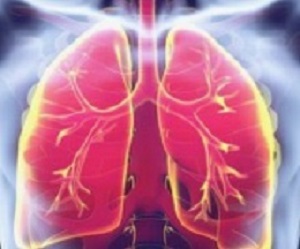 Long-term follow-up in the ANRS TEMPRANO trial confirms that tuberculosis chemoprophylaxis in HIV-infected people is more than ever relevant in resource-limited countries. This prophylactic use of drugs reduces mortality, even among people taking antiretroviral treatment who have a high CD4+ T cell count. ANRS TEMPRANO was conducted by researchers of the Ivory Coast ANRS site, which comprises teams from Inserm (U1219, University of Bordeaux), the infectious and tropical diseases department of the Treichville University Hospital, and 8 other infection treatment centers in Abidjan.
Long-term follow-up in the ANRS TEMPRANO trial confirms that tuberculosis chemoprophylaxis in HIV-infected people is more than ever relevant in resource-limited countries. This prophylactic use of drugs reduces mortality, even among people taking antiretroviral treatment who have a high CD4+ T cell count. ANRS TEMPRANO was conducted by researchers of the Ivory Coast ANRS site, which comprises teams from Inserm (U1219, University of Bordeaux), the infectious and tropical diseases department of the Treichville University Hospital, and 8 other infection treatment centers in Abidjan.
The results of this trial should encourage countries where the burden of tuberculosis is heavy to apply the relevant World Health Organisation (WHO) recommendations.
Tuberculosis is the leading cause of death among HIV-infected people in sub-Saharan Africa. In the 1990s, several studies showed that HIV-infected people who take the antibiotic isoniazid, for 6 to 12 months, are at lower risk of developing tuberculosis. On the basis of these studies, since 1993 the WHO has recommended that people living with HIV in countries where tuberculosis is rife should take isoniazid for 6 months. However, this recommendation has been little applied because it was deemed obsolete following the advent of antiretrovirals that restore immunity and hence lower the risk of tuberculosis. ANRS TEMPRANO has reassessed the benefits of isoniazid prophylaxis in the era of early antiretroviral treatment.
ANRS TEMPRANO was coordinated by Dr Xavier Anglaret and Professor Serge Eholie and conducted by researchers from the Ivory Coast ANRS site, which comprises teams from Inserm (U1219, University of Bordeaux), the infectious and tropical diseases department of the Treichville University Hospital, and 8 other HIV care centres in Abidjan. Sponsored and mainly funded by the ANRS, ANRS TEMPRANO, which was conducted between 2008 and 2015, showed that 6-month isoniazid prophylaxis for tuberculosis and early antiretroviral treatment both reduced the risk of severe morbidity in the first two years of follow-up.
Published in 2015, these results greatly contributed to the formulation of WHO treatment recommendations. ANRS TEMPRANO participants were then followed up for an average of 4.5 years, and the findings are now published. This long-term follow-up shows that tuberculosis chemoprophylaxis reduces not only severe morbidity, but also mortality, and that this benefit, which is independent of and complementary to that of antiretroviral treatment, lasts at least 6 years after administration.
Professor François Dabis, the director of the ANRS, notes that "We now have irrefutable evidence of the value of tuberculosis chemoprophylaxis in HIV-infected people in resource-limited countries in the era of antiretrovirals, even when these are initiated very early. The WHO recommendations should more than ever be applied."
Summary
Background: Temprano ANRS 12136 was a factorial 2 × 2 trial that assessed the benefits of early antiretroviral therapy (ART; ie, in patients who had not reached the CD4 cell count threshold used to recommend starting ART, as per the WHO guidelines that were the standard during the study period) and 6-month isoniazid preventive therapy (IPT) in HIV-infected adults in Côte d'Ivoire. Early ART and IPT were shown to independently reduce the risk of severe morbidity at 30 months. Here, we present the efficacy of IPT in reducing mortality from the long-term follow-up of Temprano.
Methods: For Temprano, participants were randomly assigned to four groups (deferred ART, deferred ART plus IPT, early ART, or early ART plus IPT). Participants who completed the trial follow-up were invited to participate in a post-trial phase. The primary post-trial phase endpoint was death, as analysed by the intention-to-treat principle. We used Cox proportional models to compare all-cause mortality between the IPT and no IPT strategies from inclusion in Temprano to the end of the follow-up period.
Findings: Between March 18, 2008, and Jan 5, 2015, 2056 patients (mean baseline CD4 count 477 cells per μL) were followed up for 9404 patient-years (Temprano 4757; post-trial phase 4647). The median follow-up time was 4·9 years (IQR 3·3–5·8). 86 deaths were recorded (Temprano 47 deaths; post-trial phase 39 deaths), of which 34 were in patients randomly assigned IPT (6-year probability 4·1%, 95% CI 2·9–5·7) and 52 were in those randomly assigned no IPT (6·9%, 5·1–9·2). The hazard ratio of death in patients who had IPT compared with those who did not have IPT was 0·63 (95% CI, 0·41 to 0·97) after adjusting for the ART strategy (early vs deferred), and 0·61 (0·39–0·94) after adjustment for the ART strategy, baseline CD4 cell count, and other key characteristics. There was no evidence for statistical interaction between IPT and ART (pinteraction=0·77) or between IPT and time (pinteraction=0·94) on mortality.
Interpretation: In Côte d'Ivoire, where the incidence of tuberculosis was last reported as 159 per 100 000 people, 6 months of IPT has a durable protective effect in reducing mortality in HIV-infected people, even in people with high CD4 cell counts and who have started ART.
Authors
Temprano ANRS Study Group
[link url="https://www.sciencedaily.com/releases/2017/10/171010105315.htm"]ANRS material[/link]
[link url="http://www.thelancet.com/journals/langlo/article/PIIS2214-109X(17)30372-8/fulltext"]The Lancet Global Health article summary[/link]
